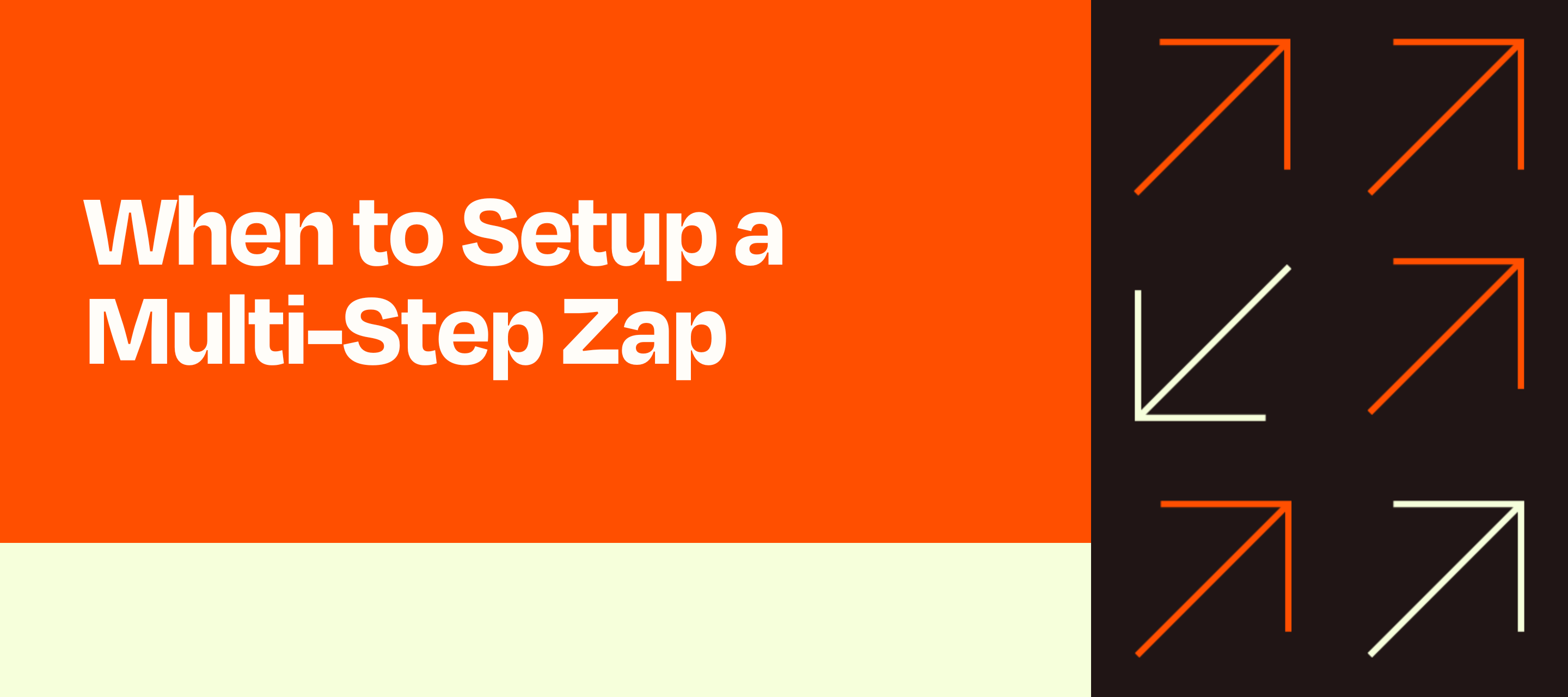This article is for you if;
- You’re new to Zapier and looking for guidance
- You’re looking to make more complex Zaps
- You’re simply curious and want to learn all there is to know about Zaps
TL;DR: Multi-step Zaps are helpful tools when automating complex tasks by gathering information from various sources and connecting data or processes between different apps. Utilizing a multi-step task often comes in handy when a task requires collecting data, updating data you currently have, performing conditional actions, and connecting multiple apps. If you’re dealing with a complex task, don’t let it overwhelm you — use a multi-step Zap to simplify your workflow and increase productivity.
Overview
Sometimes single-step Zaps aren’t enough to get the job done — that’s where multi-step Zaps come in. Multi-step Zaps allow you to automate more complex workflows, collect and update data from multiple sources, and integrate data and processes across different applications. So, when do you know it’s time to use a multi-step Zap? Let’s discuss!
When to use a multi-step Zap?
Here are some scenarios where you might use a multi-step Zap:
- Data Collection: If you need to collect data from multiple sources and consolidate it into one location, a multi-step Zap can help you automate the process. For other ideas, checkout this blog post.
- Apps often considered for this:
-
- Monday.com— for managing projects and tasks
- JotForm — for form-building options
- Mysql — for relational database management
- Airtable — for managing databases
- Google Sheets — for free, live data collection
-
- Apps often considered for this:
- Data enrichment: If you need to add additional data to an existing data set, such as updating contact information to a list of email addresses, a multi-step Zap can help you automate this process.
- Apps often considered for this:
-
- Clearbit — a data API that lets you enrich your person and company records with social, demographic, and firmographic data.
- HubSpot — Marketing Automation
- Salesforce — Customer Relationship Manager
- Gmail — Email, Google
- ActiveCampaign — a customer experience automation (CXA) platform that helps businesses meaningfully engage customers.
-
- Apps often considered for this:
-
- Paths by Zapier - Paths let your apps take different actions based on conditions you choose.
- Formatter by Zapier - can modify data to meet specific formatting requirements, such as changing date formats, capitalization, or converting text to HTML.
- Filter by Zapier — Only allow a Zap to proceed when a certain condition is met. Ex. Continue only if the email is received from [set] email address
- Schedule by Zapier — For recurring tasks. Trigger an action every day of the month, every day of the week, or every single day. You can also select the hour of the day.
- Delay by Zapier — Put your Actions on hold for a specified time before sending data to another app.
-
- Apps often considered for this:
- Cross-application integration: If you need to integrate data or processes across different applications, such as syncing customer information between your CRM and your email marketing platform, a multi-step Zap can help you automate this process.
- Apps often considered for this:
-
- Slack — an instant messaging platform that can be integrated with other apps, such as Trello or Google Calendar.
- Trello — is a project management tool that can be integrated with apps like Gmail or Dropbox.
- Shopify — an e-commerce platform that can be integrated with other apps such as Facebook Ads or QuickBooks.
- Asana — a project and task management tool that can be integrated with other apps such as Slack or Google Sheets.
- QuickBooks — accounting software that can be integrated with apps like PayPal or Stripe.
-
- Apps often considered for this:
Share your thoughts and experiences with multi-step Zaps in the comments! What is the most helpful, multi-step Zap you’re currently using? Do you have any tips or best practices to share? Let’s learn from each other.




